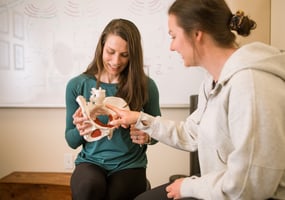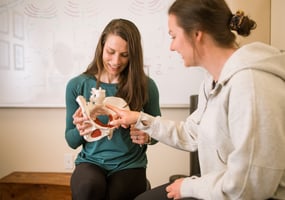Determining if you are a suitable candidate for pelvic floor physical therapy can indeed be a...
Understanding Diastasis Recti During Pregnancy and Postpartum
Introduction:
Pregnancy and postpartum bring about a range of changes in your body, and one of the common conditions that many have questions about is Diastasis Recti Abdominis (DRA). In this article, we aim to demystify DRA, providing you with the latest research and advice. Our goal is to alleviate any concerns and empower you to navigate your pregnancy and postpartum journey with confidence.
What is DRA?
Diastasis Recti Abdominis, often referred to as "abdominal separation," is a natural occurrence during pregnancy. As your baby grows and your uterus expands, the rectus abdominis muscles (commonly known as the six-pack muscles) naturally elongate. This happens in 100% of pregnant individuals by the third trimester, ensuring there's enough room for both the growing baby and your abdominal organs. Various factors, such as carrying multiples, having a shorter torso, a larger baby, or genetic predisposition, can influence the extent of abdominal separation.
How Does DRA Affect Your Core?
Despite common advice to avoid core exercises and functional movements during pregnancy or postpartum, there is a lack of evidence supporting this precaution. Research hasn't shown any exercise that worsens DRA. Let's also address the concept of coning or doming—tenting or popping up of the connective tissue (the linea alba) that holds the rectus abdominis muscles together. Coning occurs when there's a mismatch in abdominal cavity pressure, often linked to holding your breath during strenuous activities or not engaging your core properly. Research has not been able to show that coning increases DRA during pregnancy or postpartum. Coning is not a cause for alarm, however, it can be an indicator that you need to improve abdominal muscle engagement and modify your movements to be in a more optimal position.
Managing Abdominal Pressure: What Can You Do?
If you notice coning, consider modifying your movements to enhance core engagement and reduce coning. Modification should be individualized, based on your rectus abdominis and core muscle strength. Additionally, building core strength within your capacity is beneficial during pregnancy. When these muscles are not adequately loaded they can weaken, which has been proven to increase abdominal separation and increase healing time of these tissues into postpartum.
Key Takeaways:
- DRA is a natural part of pregnancy and should not be feared.
- Factors influencing the severity of DRA include genetics, baby size, maternal torso length, and multiples.
- Pregnant individuals can and should strengthen their core within their capacity, which can aid postpartum recovery.
- Effective management of core pressure involves improving breathing techniques during challenging activities, enhancing core strength, and staying within your load capacity.
By following these guidelines, you can better understand and manage Diastasis Recti Abdominis, allowing you to maintain strength and confidence throughout your pregnancy and beyond.
Conclusion:
Remember that every pregnancy journey is unique, and it's essential to listen to your body. If you have concerns about DRA or any other aspect of your pregnancy, consult with a physical therapist who specializes in pelvic health and pre/postpartum care.





